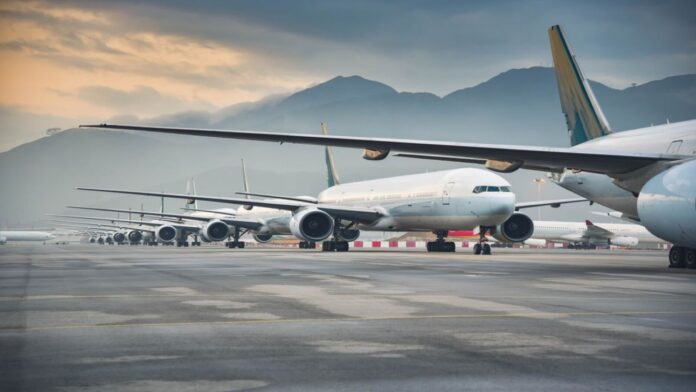In a bid to strengthen the regulatory framework and enhance safety oversight, the Directorate General of Civil Aviation (DGCA) issued a draft Civil Aviation Requirements (CAR) in September for public consultation. The proposed revisions focus on refining the rules governing wet and damp lease operations by Indian operators. This initiative underscores the DGCA’s commitment to aligning India’s aviation safety standards with global benchmarks while addressing potential risks associated with leasing arrangements.
What Are Wet/Damp Lease Operations?
Wet and damp lease operations involve the leasing of aircraft, complete with crew and maintenance support (wet lease) or with partial operational support (damp lease), from a leasing company or another airline. These arrangements are often employed to manage short-term capacity shortages, seasonal demands, or specific operational requirements. However, such leases carry inherent risks, particularly concerning safety oversight and compliance with regulatory standards.
Key Features of the Proposed CAR
The draft CAR outlines several significant changes aimed at enhancing the safety and regulatory oversight of wet/damp lease operations. The DGCA has emphasised the need for stricter criteria for selecting lessor countries and aircraft. Some of the primary provisions include:
1. Restricting Leases to ICAO-Compliant States
Under the proposed rules, Indian operators will only be allowed to lease aircraft from countries that are members of the International Civil Aviation Organisation (ICAO) and have a reliable safety oversight system. Specifically, these countries must achieve an average Effective Implementation (EI) score of at least 80% in ICAO’s Universal Safety Oversight Audit Programme (USOAP). Additionally, they must maintain a minimum score of 70% in critical areas such as personnel licensing, airworthiness, and operations.
This restriction aims to ensure that leased aircraft meet robust safety standards and are subject to stringent regulatory scrutiny in their home countries. By tying leasing permissions to ICAO compliance scores, the DGCA seeks to mitigate risks associated with aircraft originating from jurisdictions with weaker oversight mechanisms.
2. Standardised Surveillance by DGCA
Another key element of the draft CAR is the standardisation of DGCA’s surveillance practices for leased aircraft. This involves a more uniform and systematic approach to monitoring the operations, maintenance, and crew performance of leased aircraft. Enhanced surveillance will ensure that safety standards are consistently applied, regardless of the source of the leased aircraft.
3. Focus on Comprehensive Safety Oversight
The revised CAR places significant emphasis on ensuring that Indian operators conducting wet/damp lease operations adhere to the highest safety standards. This includes aligning their practices with the safety oversight systems of the lessor countries, conducting rigorous inspections, and maintaining detailed documentation of all operational activities.
Why These Changes Are Necessary
Wet and damp leases provide Indian airlines with much-needed operational flexibility, but they also present unique challenges, particularly in terms of safety oversight. Aircraft leased from countries with less stringent regulatory frameworks can pose risks, including non-compliance with Indian aviation safety norms.
By restricting leases to ICAO-compliant states with high safety scores, the DGCA aims to minimize these risks and enhance passenger safety. The standardization of surveillance practices will further ensure that leased aircraft meet the same safety benchmarks as those registered in India.
Implications for Indian Airlines
The revised regulations are likely to have both positive and challenging implications for Indian operators:
1. Improved Safety Standards
The proposed framework ensures that only aircraft from reputable lessor countries with strong safety oversight systems are used. This will significantly reduce the likelihood of safety violations and technical issues associated with leased aircraft.
2. Stricter Compliance Requirements
Indian airlines will need to adapt to stricter compliance requirements, which could increase operational complexity. This includes ensuring that their lessor partners meet the stringent ICAO safety criteria and facilitating DGCA’s enhanced surveillance processes.
3. Limited Leasing Options
Restricting leases to ICAO-compliant states with high safety scores may limit the pool of available aircraft for Indian operators. This could pose challenges, particularly during peak seasons when demand for additional capacity is high.
4. Potential Cost Implications
The enhanced regulatory requirements and limited leasing options could lead to higher leasing costs. Airlines may need to factor these additional expenses into their operational budgets, potentially impacting ticket prices and profitability.
Global Context and Benchmarking
The DGCA’s proposed changes align with global best practices for aviation safety. ICAO’s Universal Safety Oversight Audit Programme (USOAP) serves as a widely recognised benchmark for assessing the effectiveness of aviation safety oversight systems. By adopting these standards, the DGCA not only enhances safety within India’s aviation ecosystem but also strengthens the country’s reputation on the global stage.
Public Consultation and Next Steps
The draft CAR has been released for public consultation, inviting feedback from stakeholders, including airlines, leasing companies, and aviation experts. The DGCA will review the inputs received and incorporate relevant suggestions before finalising the revised regulations.

This participatory approach ensures that the new rules are practical and effective while addressing the concerns of all stakeholders.
The DGCA’s proposed revisions to the Civil Aviation Requirements on wet and damp lease operations mark a significant step toward enhancing aviation safety in India. By restricting leases to ICAO-compliant states with strong safety oversight systems and standardizing surveillance practices, the regulator aims to mitigate risks and ensure the highest safety standards for passengers.
While these changes present challenges for Indian operators in terms of compliance and leasing options, they also promise long-term benefits by fostering a safer and more reliable aviation environment. As the aviation sector continues to evolve, the DGCA’s proactive measures will play a crucial role in safeguarding India’s position as a global leader in aviation safety.



